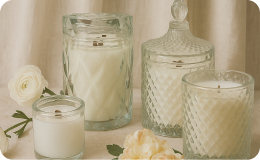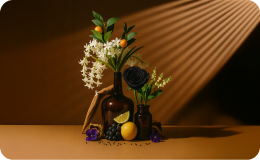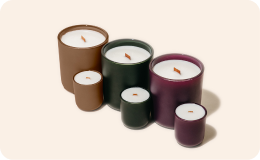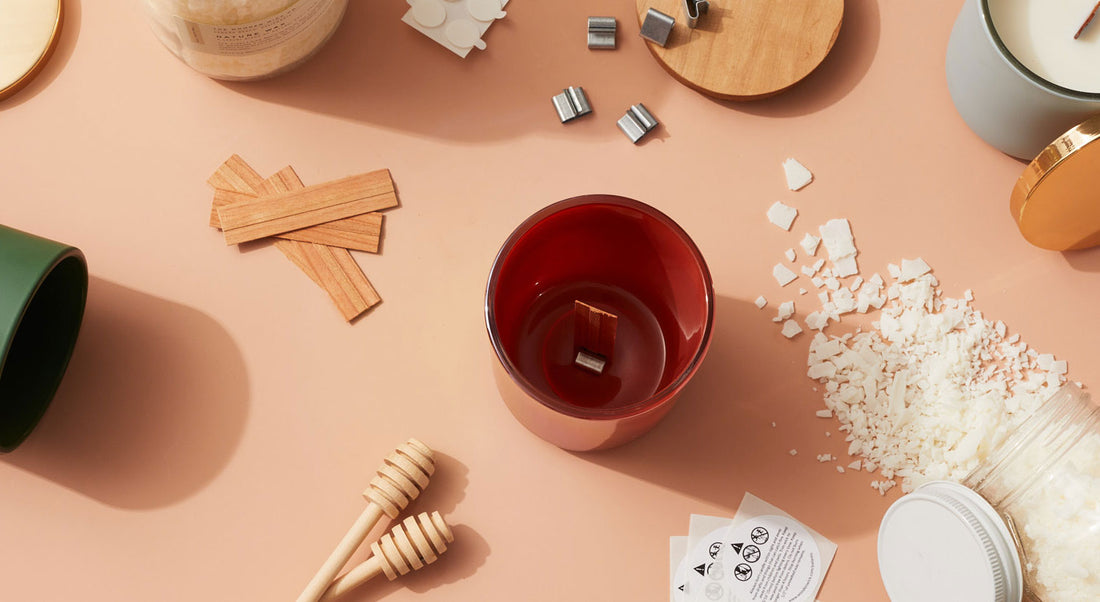Candle Fragrance Basics
Did you know that 75 to 80 percent of all candles sold in the U.S. today are scented? Candle fragrance is one of the most defining characteristics of your candle so it is imperative to know the candle fragrance terms.
While it might be the appearance and packaging that cause a customer to choose it from all of the others in the store display, it quickly goes to the nose, and at that point, it’s a sale, or it’s back on the shelf.
The candle scent might even be the inspiration for your entire candle idea… we know, we’ve been there. If you're ready to be inspired, browse our incredible selection of candle fragrances here.
candle fragrance history
We could go into the history of fragrance: did you know the word “perfume” is derived from the Latin word, “per fumus” and means “through smoke” (incense)?
We could wax lyrical (pun intended) over iconic candle fragrances (who can’t get enough of Diptyque’s Baies?). Or we can discuss olfactory science and the fascinating connections between smell and memory and smell + emotion.
Even the fact that human beings can discriminate among more than a trillion different smells, yep, a trillion (Science Magazine). But for now, let’s stick to candle fragrance and how to use it in your wax blend!
using fragrance oils in candle making
First, let’s clear up some confusion about what candle fragrances are and are not.
Courtesy, The National Candle Association:
“Candle fragrance materials may be derived from essential oils or from synthetic aroma chemicals. The safety of scented candles is backed by decades of research, fragrance testing, and a history of safe use.
Although there are no known health hazards associated with the use of scented candles, unfounded concerns about the safety of man-made fragrances vs. “natural” fragrance materials and essential oils continue to pepper the popular media and Internet.
Natural fragrances or essential oils are not necessarily safer than man-made ones. Indeed many “natural” substances (e.g., hemlock or monkshood) are extremely toxic to humans.
In addition, man-made or nature-identical fragrances can offer the additional benefit of uniformity and the elimination of unwanted contaminants. Approximately 75% of fragrance materials used in the world are man-made.”
how to select your fragrance oils
When selecting a fragrance for your candle, make sure it is from a reputable supplier. There are many available to crafters and small home based businesses, which don’t require large minimums and do sell adequate quality product.
Of course we think our makesy fragrances are not only the best quality, but also the most unique and sophisticated scents available anywhere! For larger candle making businesses, you are most likely going directly to the big fragrance houses, which do in most cases, require large minimums.
can I use essential oils instead of fragrance oils in candles?
Yes, you can use strictly essential oils to make your candles. However, our experience has shown that while you might get a nice cold throw, you won’t get much of a hot throw.
In fact, the hot throw you do get probably won’t smell anything like what you were hoping for. But if you are committed to using essentials, it can be done so give it a go! And be sure to check out our ever-growing collection of 100% pure essential oils.
how much fragrance do I add?
The amount of fragrance in your candles is known as the fragrance load. While the typical amount is about 6 to 8% some candles can have as much as 12%.
The amount you will use depends on the maximum fragrance load percentage of your wax as well as your personal preference.
Keep in mind, adding too much fragrance can cause your candle to not burn properly, smoke, or even self-extinguish by clogging the wick. Make sure you are consistent and measure or weigh every single time (eyeballing it is never a good idea!)
when do I add the fragrance to the candle wax?
This is so much more important than most candle-makers realize. If you add the fragrance to the wax when the wax is too hot, it can cause the fragrance to dissipate or “burn off” (it is very important to know the flash point of each of your fragrances).
If you add the fragrance when the wax is too cool, it can prevent the fragrance from properly binding and dispersing in the wax. The recommended temperature is 180 – 185 degrees F (82-85 C).
how long do I need to stir the fragrance into the candle wax?
It is best to stir for 90 – 120 seconds. It’s a long time, we know. However it is very important to get the wax and fragrance to properly bind together and alleviate possible issues later.
what is cold throw?
Cold Throw is the amount of fragrance emitted from a candle that is not burning. Why is this important if it’s not burning?
If you are selling your candles you know the first thing people do is smell them. When they like what they smell, they buy your candle. If they can’t smell it, they assume it isn’t going to smell when it’s burning either (which may or may not be true.)
what is hot throw?
Also known as warm throw and scent throw, this is the fragrance that is emitted from a candle when it is burning.
what is candle sweating?
Sweating is when little beads (or even pools) of fragrance gather on the top of your container candle or seep out of all sides of a pillar. There can be many reasons this is happening.
It is very common in 100% soy candles since the oil can separate during temperature variations. Other reasons can include; not stirring the fragrance into the wax sufficiently, not adding the fragrance at the correct wax temperature, too high of a fragrance load or using a fragrance oil that is not suited to the type of wax you are using.
Now that you've got the candle fragrance terms and basics down, ready to start experimenting? Browse our candle starter kits here, along with discovery kits with enhancers that you can add to make your candles unique.
We love sharing your creations! Don’t forget to share your creations and tag @makesy on Instagram or @makesyofficial on Facebook for the chance to be featured!









